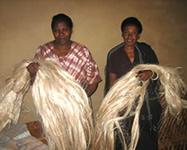You're Sure You Want to Eat That?
/ A couple of weeks ago, the folks I follow on Twitter (a terrific bunch of CSR and social enterprise experts) were all abuzz about a New York Times article that told the story of a young woman from Minnesota. What was all the fuss?
A couple of weeks ago, the folks I follow on Twitter (a terrific bunch of CSR and social enterprise experts) were all abuzz about a New York Times article that told the story of a young woman from Minnesota. What was all the fuss?
Well, it turns out that this woman, 22 year-old Stephanie Smith, ate a bad hamburger – made from E.coli-laden beef – and it paralyzed her.
We’ve all heard about E.coli and the illness it causes, but Stephanie’s story was shocking in its seriousness. While her case is extreme, she’s actually just one out of tens of thousands of people who have been sickened by 16 different E.coli outbreaks in just the last three years alone.
In addition to the article, the NY Times made a 9-minute video that chronicles her story – although I wasn’t able to embed it here, you can visit their site and watch it yourself (I highly recommend it).
This story hit home for me on a few different levels.
On a professional level, I am very interested in sustainability and specifically the ways in which businesses can demonstrate their commitment to corporate citizenship through positive environmental action. Given the fact that livestock production is the greatest contributor to greenhouse gas emissions in America, I have spent quite a bit of time considering just how broken this system of production really is, as well as what can be done to reduce the industry’s environmental impact going forward.
On a personal level, however, food production is important to me because I want to be conscious of what I put in my body. Marketers know that consumers (especially those labeled “green”) are most concerned with products that go “in me, on me or around me” – and food definitely falls into this category. Thus I try to be as educated as I can about where my food comes from, and use my wallet to show support of businesses that operate in ways that align with my values.
Interestingly, on an academic level, this story was also very relevant. One of my MBA courses this semester focuses on corporate governance, accountability and ethics – an area of interest that’s now increasingly important in the wake of last year’s financial crisis.
In fact, Stephanie’s story serves as a real-life example of irresponsible corporate governance gone unchecked.
In class I’ve learned that good governance is related to two important concepts: leadership and accountability. These are two factors that seem to be largely undervalued not only in Stephanie’s case but in our meat industry as a whole.
Cargill, the company that sold the infected meat to Stephanie and other consumers, is America’s largest private company. The fact that it is private is crucially important: Unlike its public counterparts, Cargill is not required to disclose information about its governance structure nor its financial health to the general public. Why does this matter? Plenty of companies are private, right? Sure – but when the company in question is responsible for providing food to millions of Americans, the issue becomes more concerning.
What about Cargill’s meat suppliers? In Stephanie’s case, four different companies supplied meat products to Cargill, including one in Uruguay! As the NY Times article found, not only are standards for hygiene and safety often very lax at these places, but management at these companies often have unwritten agreements not to test their product for food-borne illness for fear of losing business!
And where is the USDA in all of this? It turns out that in many cases the USDA knew that Cargill was violating safety standards but did nothing about it.
Ok, this is the point at which I must admit that a lot of my information is based on this one article about this one woman. How can I assume that this one example of irresponsible and reckless behavior is indicative of the entire beef industry, its suppliers and even the USDA? Well, I can’t.
What I can say is that, after learning more about where our food comes from, and the ways in which animals are treated in this production system – well, it really doesn’t seem like that much of a stretch.
Plus, couldn’t we argue that just one example of egregious misconduct on the part of these entities is enough of an example of corporate governance, accountability and leadership gone awry? If this can happen to one woman, isn’t that enough?
In my opinion, Cargill and its industry colleagues sit atop an unsafe, irresponsible supply chain that puts profits and mass production ahead of consumer safety and ethical production.
Many questions remain for me: Who really is steering the ship at Cargill, and to whom are they accountable? What is the incentive for Cargill and its suppliers to act in ways that protect consumers and mitigate the risk of lawsuits and other legal actions? And, if the USDA cannot enforce a set of standards for safety in meat, what other harmful substances are making their way into the foods we eat? How can consumers possibly protect themselves?
For Stephanie Smith, though, the answers are clear: “In the simplest terms, she ran out of luck in a food-safety game of chance whose rules and risks are not widely known”[i].
[i] “E.Coli Path Shows Flaws in Beef Inspection,” published online 10/3/09 by www.nytimes.com. Retrieved online 10/3/09.






 Ok, so we know that local means a lot of things. Does this matter? If we can’t define it, should we really care about eating local?
Ok, so we know that local means a lot of things. Does this matter? If we can’t define it, should we really care about eating local?
